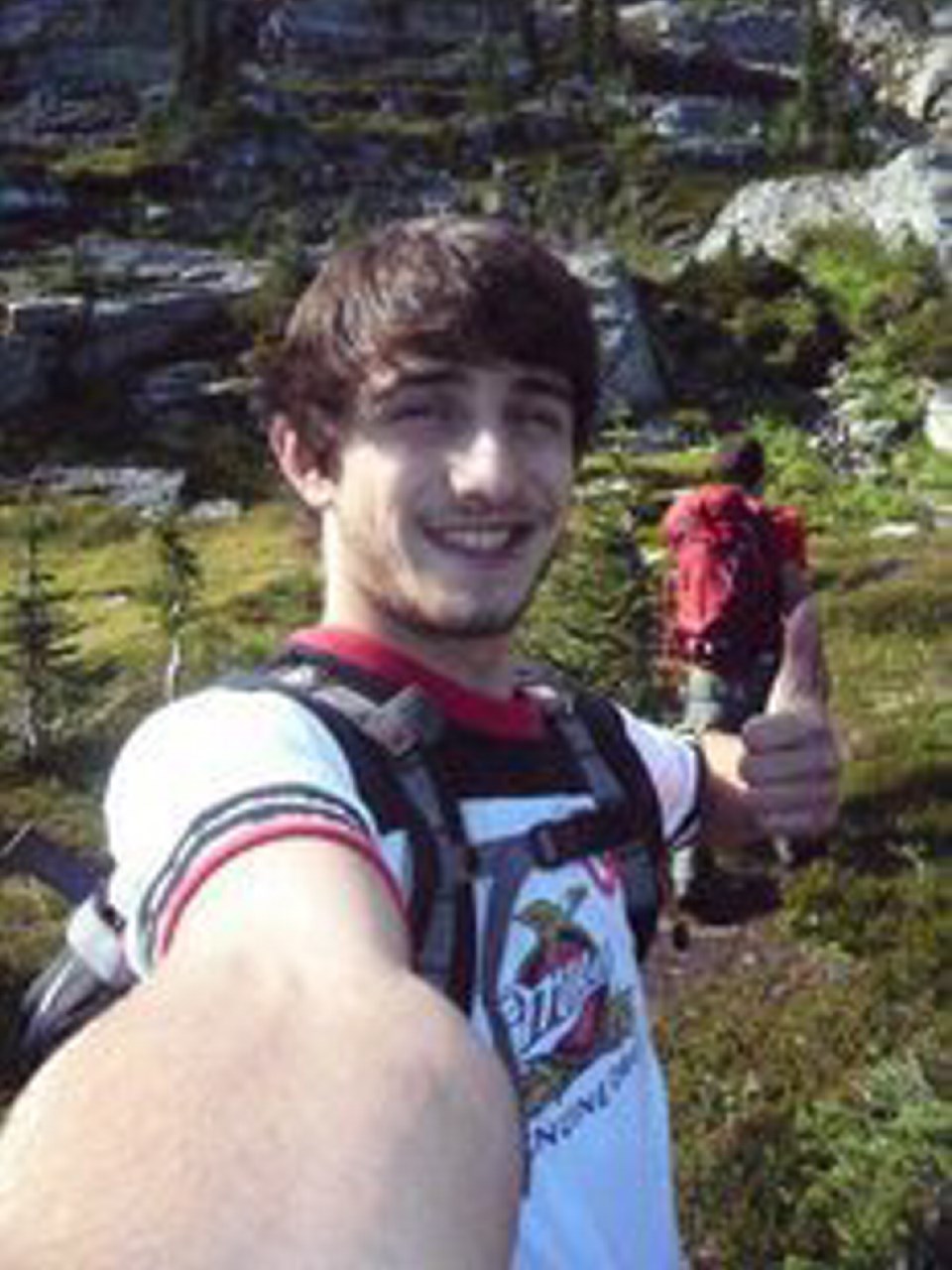The scene inside a Cormorant Street apartment on the afternoon of Aug. 3, 2011, was chaotic and frightening, a B.C. Ambulance paramedic testified Tuesday at Joshua Bredo’s first-degree murder trial in B.C. Supreme Court.
“I looked into a room with many, many police officers and two young men lying on the floor. It was very frightening that I was responsible for them,” said Bonnie Lunn, an advanced life support paramedic.
Bredo is charged with the murder, sexual assault and unlawful confinement of Daniel Levesque, an aspiring musician who had moved to Victoria from Revelstoke two months before he died.
The paramedic had been dispatched to a stabbing at 5:11 p.m. When she arrived at the sixth-floor apartment five minutes later, Lunn heard police saying that a large knife and a hammer had been involved, she testified.
Bredo was lying on the floor near the window, with a police officer kneeling down on either side of him. One of the officers was pressing a wound on the left side of Bredo’s abdomen.
Lunn noted Bredo had a small, two-centimetre laceration on his abdomen with some blood running out of the wound. She gave the officer a gauze pad to place over the wound and moved to help Levesque, who had no pulse and was not breathing. Police told her he had been found face down on the couch.
Lunn asked the officer to continue CPR. Levesque was ventilated and given drugs, including the stimulant ephedrine and Narcan, which can reverse the effects of some drugs, in case he had used cocaine.
“We started to see some rhythms on the monitor. … We got a rhythm, pulse and blood pressure back,” testified Lunn, as several people began to cry in the public gallery.
Lunn said she handed her scissors to an officer and asked her to cut off Levesque’s clothes. She saw an abrasion on Levesque’s left shoulder. He was also bleeding from the top and back of his head.
“I noticed contusions. I felt some lumps and noticed softness on the back of his head. There was some swelling and some softness as well,” Lunn testified.
She saw bruising under Levesque’s eyes and blood on his left hand.
Defence lawyer Tim Russell asked if the return of Levesque’s vital signs was a result of the Narcan.
No, Lunn replied. “We were also doing CPR, ventilation and ephedrine. … It could have been a combination.”
Advanced life support paramedic Robert Leech told the six-man, six-woman jury how he treated the patient who identified himself as Josh.
Bredo was awake and able to speak, testified Leech.
“I asked him what happened. His response was: ‘I don’t know,’ ” Leech said.
Bredo’s heart and respiration rate was fast. Leech testified that he was concerned about Bredo’s puncture wound because he did not know how deep it was and could not discount internal bleeding.
“The police said there was an 11-inch kitchen knife involved. … I also heard a hammer was involved,” Leech said.
The head of the hammer, broken off at the shaft, was lying on the floor, he recalled.
Leech asked Bredo if he had been struck by the hammer.
“The response was: ‘I don’t know.’ ”
Bredo admitted he had used cocaine prior to the assault, Leech testified.
When they were in the ambulance, Leech again asked Bredo what had happened.
“I continued to get the same response. He didn’t know.”
Bredo was disoriented and confused about the time and place, Leech testified.



